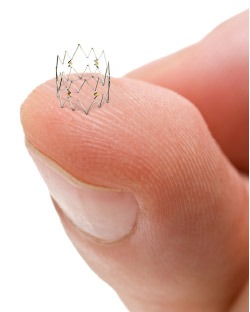
Positive twelve-month results from Intact Vascular’s Tack optimised balloon angioplasty—below-the-knee (TOBA-BTK) clinical study have been presented at the SCAI 2016 conference (4–7 May, Orlando, USA) by Christian Wissgott, assistant director at Westküstenklinikum Heide in Heide, Germany.
The TOBA-BTK study enrolled 35 subjects at six sites in Europe and New Zealand. All study subjects were suffering from critical limb ischaemia in one or both legs. Of the subjects enrolled, 32 were treated with the 4F Tack system following standard balloon angioplasty in the tibial and peroneal arteries. The system is a new technology designed to repair dissections (or tears) in the artery wall that frequently occur as a complication of balloon angioplasty. The system allows physicians to repair these dissections while leaving a minimal amount of foreign material in the artery, reducing mechanical stress on the artery, and preserving future treatment options.
Some of the key conclusions from the TOBA-BTK study included:
- 4% 12-month primary patency
- 2% 12-month primary assisted patency
- 5% freedom from target lesion revascularisation
- 5% amputation-free survival
- 1% freedom from major amputation
Wissgott stated, “Restoring blood flow to the legs in patients with critical limb ischaemia is vitally important to their quality of life and survival. We have few treatments that have a demonstrated ability to keep the small arteries below the knee open over 12 months, so these TOBA-BTK results are truly encouraging. These data suggest that repairing arterial dissections following angioplasty below the knee, using the minimal metal design approach of the Tack implant, can keep the treated arteries open and blood flowing.”
Patients in the study demonstrated a marked improvement, as measured by the Rutherford classification system. The study data suggest that an increasing number of patients continue to improve, with 75% of patients experiencing a four- or five-step improvement in Rutherford classification from baseline (p<0.0001) at 12 months.
Wissgott continued, “The Tack endovascular system holds much promise for improving the long-term outcomes associated with balloon angioplasty below the knee. I look forward to building on these exciting results in the expanded TOBA II BTK clinical trial that is currently being planned.”
Peter Schneider, chief of vascular therapy at the Kaiser Foundation Hospital in Honolulu, USA, and Intact Vascular’s founder and chief medical officer, added, “The existing treatments for arterial dissections below the knee involve leaving a great deal of metal behind, and in the small arteries of the lower leg that is plagued with problems. The Tack implant takes a very novel approach and allows the treating physician to target therapy only where it is needed to promote healing of the injured artery.”
Based on these results, the company is pursuing an expanded study (TOBA II BTK) that will assess the performance of the Tack system in a larger population and will include US and international investigators.













